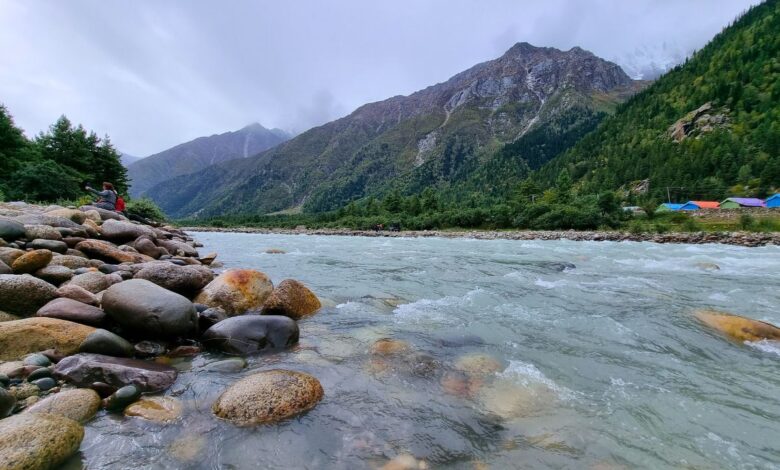Rivers of Reverence: Exploring the Aquatic Gems of Himachal Pradesh

Nestled in the lap of the Himalayas, Himachal Pradesh is renowned for its breathtaking landscapes, pristine natural beauty, and abundant water resources. Among its most prominent features are the numerous rivers that meander through its terrain, shaping its geography and sustaining its ecosystem. From the mighty Satluj to the tranquil Beas, each river in Himachal Pradesh has its own story to tell, attracting tourists, adventurers, and nature lovers alike. In this article, we delve into the fascinating world of rivers flowing through Himachal Pradesh, exploring their significance, characteristics, and the experiences they offer.
The Satluj River:
Originating from the Tibetan plateau, the Satluj is one of the longest rivers in Himachal Pradesh. Its journey begins at the Mansarovar Lake, and it enters India near the Shipki La pass in Kinnaur district. The river then flows through picturesque valleys, gorges, and towns, including Rampur, Shimla, and Bilaspur, before joining the mighty Indus in Pakistan.
The Satluj holds immense cultural and economic significance for the region. It has been harnessed for hydroelectric power generation, with several dams built along its course, including the Bhakra Dam, one of the largest dams in India. Additionally, the Satluj sustains agriculture, supports diverse aquatic life, and provides opportunities for water-based recreational activities such as rafting and fishing.
The Yamuna River:
The Yamuna River, coursing through the foothills of the Himalayas, not only enriches the landscape of Himachal Pradesh but also plays a crucial role in the region’s hydrology and ecology. Originating from the Yamunotri Glacier in Uttarakhand, its waters traverse through the state, fostering lush plains and fertile valleys along its path. Despite its source lying beyond the state’s borders, the Yamuna’s influence extends deeply into Himachal Pradesh, affecting its biodiversity, agriculture, and the livelihoods of the people dependent on its waters. Additionally, the Yamuna serves as a cultural and spiritual symbol, revered by communities residing along its banks, further enhancing its significance within the region. The presence of the Yamuna River in Himachal Pradesh underscores the interconnectedness of water systems across geographical boundaries, highlighting the importance of conservation and sustainable management practices.
The Beas River:
Often referred to as the “Heart of Himachal Pradesh,” the Beas River is another prominent waterway in the region. Originating from the Beas Kund, a sacred lake near Rohtang Pass, the river flows through Kullu and Mandi districts, offering mesmerizing views of snow-capped peaks, lush valleys, and apple orchards along the way.
The swift currents of the Beas make it a popular destination for adventure enthusiasts who seek thrilling water sports such as river rafting and kayaking. Additionally, numerous temples, monasteries, and tourist resorts adorn the river’s banks, making it a favored destination for pilgrimage and leisure travel alike.
The Ravi River:
Flowing through the scenic landscapes of Chamba and Kangra districts, the Ravi River adds to the natural charm of Himachal Pradesh. Originating from the Bara Bhangal region of the Himalayas, the Ravi meanders through deep gorges and verdant valleys, offering stunning vistas at every turn.
Nature lovers and photographers are drawn to the Ravi for its serene ambiance and crystal-clear waters, seeking tranquility and natural beauty. Quaint villages, ancient temples, and terraced fields dot its banks, offering a glimpse into the rich cultural heritage of the region.
The Chenab River:
Formed by the confluence of the Chandra and Bhaga rivers near Tandi in Lahaul and Spiti district, the Chenab is one of the major tributaries of the Indus River system. Flowing through the rugged terrain of Himachal Pradesh, the Chenab traverses steep gorges, snow-clad peaks, and remote villages, offering a glimpse into the region’s untamed wilderness.
The Chenab is renowned for its challenging rapids, making it a favorite destination for experienced rafters and adventurers.
Moreover, the river’s basin is home to diverse flora and fauna, including rare species such as the Himalayan ibex and snow leopard, thereby making it a paradise for wildlife enthusiasts and conservationists alike. Additionally, the abundant biodiversity fosters a thriving ecosystem, attracting ecotourists and researchers to explore its rich natural heritage. Furthermore, the pristine habitats along the riverbanks provide vital corridors for wildlife migration, contributing to the overall conservation efforts in the region. In addition, the presence of endemic plant species adds to the ecological significance of the area, highlighting its importance for botanical enthusiasts and environmentalists. Furthermore, the conservation initiatives implemented along the river’s course aim to preserve its unique biodiversity for future generations to cherish and protect.
Conclusion:
The rivers flowing through Himachal Pradesh are not just waterways; they are lifelines that sustain the region’s ecosystem, culture, and economy. From the towering peaks of the Himalayas to the serene valleys of the Dhauladhar range, these rivers sculpt the landscape, providing sustenance, inspiration, and recreation to all who encounter them. Whether you seek adventure, spiritual solace, or simply a moment of tranquility amidst nature, the rivers of Himachal Pradesh offer an unforgettable experience that will leave you enchanted, rejuvenated, and invigorated.
For More Articles Click



